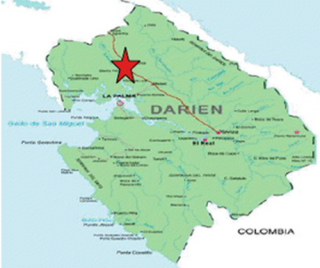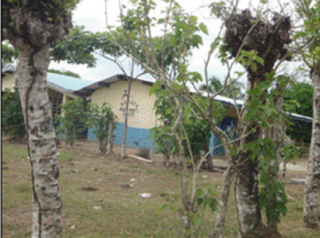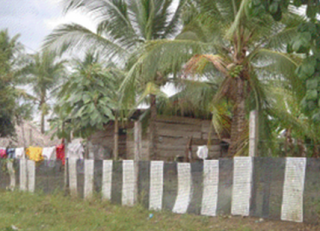Embera Purú, Panama
![]()
![]()
![]()
![]()
![]()
![]()
![]() Click on Programs to learn more about their work in this community
Click on Programs to learn more about their work in this community
General Information

| Population* | 266 |
| Number of homes | 44 |
| Avg # of people per home | 6 |
| Electricity | In the majority of the community |
| Corregimiento | Agua Fría |
| District | Chepigana |
| Corresponding Health Center | Centro de Salud – El Tirao |
| Distance from compounds | 45 minutes from Tortí (can take up to an hour with the Senafront) |
| Road conditions | Below average, dirt road |
* Population does not reflect how many patients will be seen on medical
brigades as many people from surrounding communities come seeking
Medical Brigades medical attention.
Expressed Needs and Capacities
The community has expressed several strengths. Many craftswomen live in the community and
dedicate their time to making traditional artisan crafts. In addition, there is a strong agricultural
sector run primarily by the men. The community has also expressed a desire to become more
involved in tourism. Further, latrines, youth access to sports, and improved roads are top interests
and priorities for improvement.

| Embera Purú’s educational system includes a primary school with four teachers. The school is located in the center of the community. The closest secondary schools can be found in Zapallal and Agua Fría, which can both be reached in approximately ten minutes by bus. About 70% of the community can read and write. A majority of the older community members do not speak or understand Spanish. |

| Embera Purú has a gravity-run aqueduct water system. At the time this report was written in October of 2012 the community was in the process of installing wells and new pipes. The source of their water is from the community Agua Fría, which is located about 20 kilometers from Embera Purú. Despite this system, water is very scarce during the summers as well as the winters and the community often must buy bottled water. When the water runs during the winter, it usually comes at night. However, the frequency is very unreliable and they often go many days at a time without it. During the summer the aqueduct runs even less often and comes sporadically. Any water that comes from the aqueduct is not purified; however the families boil or chlorinate it before drinking. Currently, the community has no Water Committee. |
Embera Purú does not have a Centro de Salud (health center). The closest center is El Tirao. There are no health care assistants or midwifes in the community, nor a Health Committee. For dental access, people travel to the community of Santa Fe.
The most common illnesses seen by community members are diarrhea, fever, and the common cold. The community has one compost latrine that was built by Peace Corps volunteers. Other members of the community do not have access to any sanitation facilities. Most of the households have stoves and a majority of the inhabitants have wooden floors in their homes. The houses are very traditional and constructed high off the ground from wood with penca (palm tree leaf) roofing.

|
For the men in the community, the main form of employment is agriculture on privately owned farms. Members cultivate rice, yucca, yams, or otoe, a root vegetable. The women also work on the farms, make traditional crafts, or take care of the home. Several families raise chickens and pigs for personal consumption.
Local businesses in the area consist in three small stores that sell staple foods and snacks. The community has no access to credit, and up until the time of the interview, no one had ever taken out a loan. The organization, AMPYME worked with the community two to three years ago and distributed pigs as well as chickens throughout the community; although this project was not very successful. |
In this particular region of Panama, no recycling or trash collection system has been established to aid community members in waste management. Embera Purú has not reported any locally based initiatives to reduce or reuse waste, and community members burn their trash or throw it in nearby bodies of water as the main form of disposal. The majority of all farmers with money use herbicides on their crops and plants. Everyone in the community practices slashing and burning. The community also had a reforestation project many years ago funded by a private donation. There has been no form of environmental education programs within Embera Purú with the exception of an environmental lawyer that came to the community once. There is no environmental committee in the community.
While there is no lawyer in Embera Purú, they have access to legal services in Panama City.
As an indigenous community, they have their own leader, el Noko. They also have a local president who meets with presidents from other communities to consult and discuss regional affairs. Almost all issues within the community are solved from within, free from outside assistance. The members live on a piece of collective land that is shared amongst the entire community.
Currently there is another organization working in Embera Puru working on the construction of a well, however the community does not know their name.
Medical/Dental, Public Health and the Environmental program are all currently working in the community.
Source of information: Key informant interview and 2010 government census
Date of interview: September 26th, 2012
Last Visited: February 13, 2014
Last updated: February 28, 2014